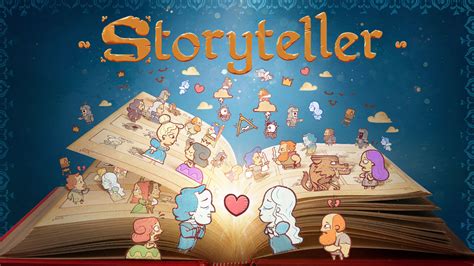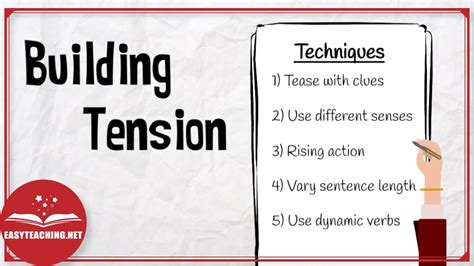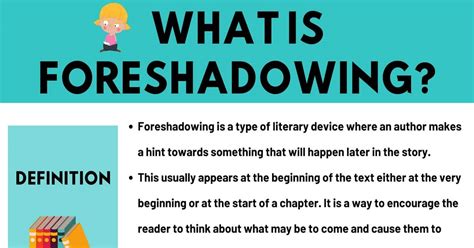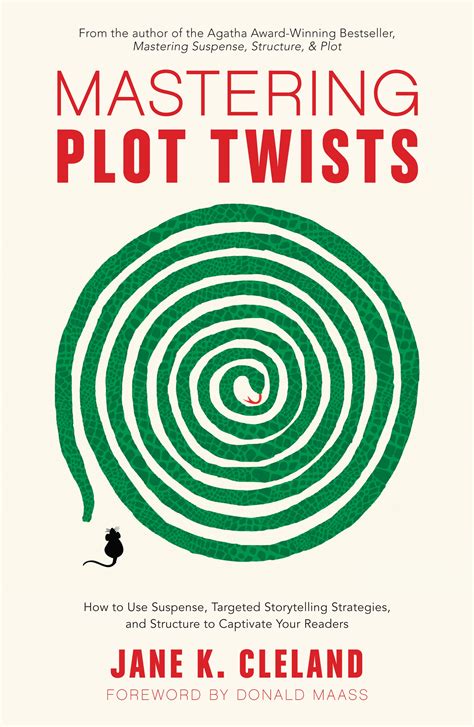Breaking News


Popular News


Learn the art of storytelling in horror games by creating atmosphere, building tension, developing characters, using sound, and mastering plot twists.In the world of gaming, storytelling is a crucial element that can make or break a player’s experience. When it comes to horror games, the art of storytelling becomes even more important as it has the power to immerse players into a terrifying and suspenseful world. From creating a haunting atmosphere to mastering the art of plot twists, there are several essential elements that game developers must consider to effectively engage and scare their audience. In this blog post, we will delve into the intricacies of storytelling in horror games, exploring how developers can build tension through narrative, develop deep and complex characters, utilize sound and music for impact, and ultimately, leave players on the edge of their seats. Whether you’re a gaming enthusiast or a budding game developer, understanding the art of storytelling in horror games is essential for creating a truly unforgettable and chilling gaming experience.
Contents

When it comes to the horror genre, one of the most important aspects of a game is the ability to create a haunting atmosphere that will send chills down the player’s spine. This involves not only the visual elements of the game, but also the use of sound and music to immerse the player in a spine-tingling experience. Whether it’s the slow creaking of floorboards, the distant sound of a crying child, or the ominous and intense background music, every little detail plays a part in immersing the player in the unforgettable atmosphere of fear.
In addition to utilizing sound and music, the use of lighting and shadows is crucial in creating a haunting atmosphere. Whether it’s the flickering of a single candle in a dark and abandoned mansion, or the intermittent flashes of light in a thunderstorm, these visual elements work in harmony with the sound and music to create a truly terrifying environment for the player to navigate.
Environmental design also plays a major role in creating a haunting atmosphere. From eerie abandoned buildings, to misty graveyards, to dark and twisted forests, the setting in which the game takes place is just as important as the sound and visual elements. Every detail in the environment must be meticulously crafted to add to the overall feel of dread and fear that the player will experience.
To sum up, the haunting atmosphere in a horror game is a combination of visual, auditory, and environmental elements that work together to immerse the player in a world of fear and dread. Every detail, from the flickering of a single light to the distant sound of a howling wind, is carefully crafted to create an unforgettable and terrifying experience for the player.

Building tension through narrative is a crucial aspect of creating a spine-chilling horror game. The storyline should be carefully crafted to keep players on edge and invested in the gameplay. One effective way to achieve this is by gradually revealing shocking and dreadful events, uncovering dark secrets, and heightening the sense of imminent danger through the plot development. The narrative should continuously build up the feeling of unease and apprehension, making players feel like they are on the edge of their seat throughout the entire game experience.
Utilizing foreshadowing is another powerful method to raise the tension in horror game narratives. By dropping subtle hints and clues about impending doom and unsettling events, the storyline becomes more ominous and foreboding. This creates a sense of dread and impending danger, keeping players engaged and eager to uncover the next horrifying revelation. It is essential to carefully construct the narrative to maintain a delicate balance of revealing enough information to keep players intrigued while withholding crucial details to keep them on edge.
Furthermore, the use of ambiguous and enigmatic storytelling can significantly contribute to building tension in horror games. By presenting the narrative in a cryptic and puzzling manner, players are left to grapple with unknown and unpredictable elements, fostering a sense of anxiety and anticipation. This approach encourages players to immerse themselves in the storyline, forming their interpretations and speculations, ultimately intensifying the suspense and apprehension they experience. The narrative should lead players down a dark and twisted path, leaving them with a constant feeling of unease and anticipation for what horrors may come.
In conclusion, building tension through narrative is a pivotal component of crafting a compelling horror game. With careful plotting, strategic foreshadowing, and enigmatic storytelling, game developers can masterfully elevate the sense of dread, fear, and apprehension in players, resulting in a truly gripping and hair-raising gaming experience.

When it comes to creating a truly immersive horror game, there are several storytelling techniques that can be utilized to keep players on the edge of their seats. One of the most effective methods for building tension and anticipation is through the use of foreshadowing and suspense. By planting subtle hints and clues throughout the game, players can be given a sense of unease and anticipation as they try to piece together the impending horrors that await them.
One way to incorporate foreshadowing into a horror game is through the use of environmental storytelling. This can be achieved by placing subtle visual and audio cues throughout the game world that hint at the horrors to come. For example, a flickering light in a seemingly abandoned hallway, or the distant sound of echoing footsteps, can create a sense of foreboding and leave players feeling uneasy.
Another effective method for building suspense is through the use of audio design. By utilizing unsettling sound effects and music, game developers can create a palpable sense of dread that resonates with players on a subconscious level. The use of discordant tones, dissonant chords, and eerie ambient sounds can all contribute to a feeling of impending doom, leaving players constantly on edge as they navigate the game world.
| Foreshadowing | Suspense |
|---|---|
| Subtle hints and clues | Unease and anticipation |
| Environmental storytelling | Sense of foreboding |
| Audio design | Unsettling sound effects and music |

One of the most crucial elements of a successful horror game is the development of deep and complex characters. In order to truly immerse players in the game’s terrifying world, it is essential to create characters that are not only relatable, but also have their own intricate and haunting backstories. These characters should be multi-dimensional, with layers of emotions and motivations that add to the overall depth of the game’s narrative.
Utilizing the li tag, game developers can create a list of traits and characteristics for each character, allowing them to delve deeper into their psyche. This will enable them to reveal inner demons, fears, and vulnerabilities that will resonate with players on a profound level.
In addition, using the table tag can help organize and showcase the intricate relationships between the characters, their past traumas, and the impact of their actions on the game’s storyline. This visual representation can aid in developing a rich and compelling narrative that keeps players engaged and invested in the characters’ fates.

When it comes to creating an immersive and impactful horror game, the use of sound and music can play a crucial role in setting the tone and atmosphere for the players. The right sound effects and ambient noises can build tension and anticipation, while the perfect soundtrack can enhance the emotional impact of key moments in the game.
By carefully selecting and utilizing sound and music, game developers can effectively guide the player’s emotions and enhance the overall experience. From the subtle use of background noises to the strategic placement of shocking sound effects, every detail contributes to creating a truly haunting and unforgettable experience for the players.
Furthermore, the use of dynamic soundtracks that respond to the player’s actions can further enhance the sense of immersion and engagement. Whether it’s the sudden silence before a jump scare or the gradual crescendo of music leading up to a climactic moment, the use of sound and music can greatly impact the player’s emotional state and overall enjoyment of the game.
In addition to setting the mood and atmosphere, sound and music can also be used to provide important cues and foreshadowing for the players. Subtle hints in the soundtrack or specific sound effects can subtly hint at impending dangers, creating a sense of suspense and anticipation that keeps players on the edge of their seats.

Plot twists are a crucial element in storytelling, especially in the horror genre. They are the unexpected turns that keep the audience on the edge of their seats and leave a lasting impact on them. Mastering the art of plot twists in horror games requires meticulous planning and clever execution.
One effective way to master the art of plot twists is by foreshadowing. Foreshadowing is the subtle hinting at future events in the story, and when done correctly, it can make a plot twist feel inevitable yet still surprising. The use of foreshadowing creates a sense of anticipation and unease, adding depth to the narrative and making the twist more impactful.
Another important element in mastering plot twists is suspense. Building tension throughout the game through well-crafted narratives and gameplay mechanics can make the eventual plot twist even more shocking and memorable. By creating an atmosphere of uncertainty and fear, the player becomes more invested in the story, making the plot twist all the more powerful.
Lastly, mastering the art of plot twists in horror games also involves utilizing sound and music for impact. The use of eerie sound effects, unsettling music, and sudden changes in audio cues can effectively heighten the tension leading up to the twist, creating a sense of dread and unease that primes the player for the unexpected.

What is the importance of storytelling in horror games?
Storytelling in horror games sets the atmosphere, creates tension, and immerses players in the game world. It also helps to develop characters and plot, making the overall experience more engaging.
How can storytelling enhance the gameplay in horror games?
Storytelling can enhance gameplay in horror games by providing motivation for the players to continue, creating a sense of urgency, and adding depth to the overall experience. It also helps to connect players emotionally to the game.
What are some effective storytelling techniques used in horror games?
Effective storytelling techniques in horror games include using environmental storytelling, audio cues, and subtle hints to build suspense and fear. Additionally, the use of non-linear narrative and unexpected plot twists can also be highly effective.
Are there any classic horror games known for their outstanding storytelling?
Yes, classic horror games like Silent Hill 2, Resident Evil, and Amnesia: The Dark Descent are known for their outstanding storytelling, creating compelling narratives that leave a lasting impact on players.
How important is the role of the protagonist in horror game storytelling?
The role of the protagonist is crucial in horror game storytelling as it allows players to experience the fear and tension from the character’s perspective. A well-developed protagonist can make the storytelling more impactful and immersive.
What are some common themes explored in horror game storytelling?
Common themes explored in horror game storytelling include survival, isolation, fear of the unknown, and the inner struggles of the characters. These themes contribute to the overall atmosphere and sense of dread in the game.
How does the art of storytelling in horror games impact the player’s experience?
The art of storytelling in horror games has a profound impact on the player’s experience by evoking intense emotions, creating a sense of unease, and leaving a lasting impression. It can make the game more memorable and immersive.